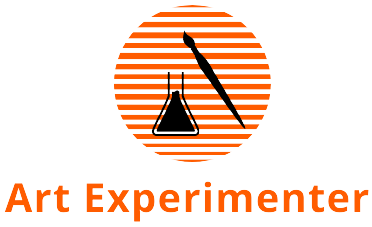HOW INNOVATION AND PRODUCT DESIGN CHANGED INDIAN HEALTHCARE INDUSTRY
The Healthcare industry is the largest sector in India to generate earnings and to provide utilization. The Healthcare industry in India includes all medical resources like hospitals, medical instruments, experimentation, contracting, pharmaceuticals, telehealth, medical tourism, and insurances. It is growing vastly to strengthen services and increasing outlay both in the public and private sectors. These sectors mainly aim to provide basic medical prerequisites in the form of primary health centers in rural areas.
INVESTMENT:
- Jubilant generic ltd teamed up with US-Based Gilead sciences INC and entered into production and sold the potential drug Remde Sivir against COVID-19 in 127 countries together with India.
- To enhance the country’s potential against COVID-19, the primary COVID-19 sample assortment mobile lab namely BSL-three VDRL lab was started in India that collects more than 1000 samples per day.
On September 23rd, 2018, the Government of India launched a scheme called Jan Arogya Yojana ( Ayushman Bharat Scheme) by the Honorable Prime Minister Of India, Shri Narendra Modi to achieve the vision of Universal Health Coverage which is the world’s largest health assurance scheme which aims to provide 5 lakhs per family per year as a health cover. Over 50 crore beneficiaries are eligible for these benefits across the country.
This scheme provides cashless access to health care services for recipients in hospitals. To utilize this benefit the eligible person required valid identification proof. As per the government till now 10.74 crore families benefited under this scheme.
As per health officials,68% of beneficiaries are getting treatment in listed private hospitals. Peak specialties under which beneficiaries have received claimed or oral and maxillofacial surgery, general surgery, ophthalmology, and gynecology.
Recently, the union cabinet also approved an allied and healthcare executive bill which helps to standardized allied healthcare. This will help to reduce the cost of care and improve accessibility. According to a recent study by the Center for Disease dynamic center, economics, and policy (CDDEP) in the US reveals that there is at least 600,000 doctors shortage in India, especially in rural India.
INNOVATIONS IN HEALTHCARE DELIVERY SYSTEM
There is a huge revolution in the field of medicine by the involvement of advanced Innovative technologies like artificial intelligence, robotics, the internet of things, health aggregators which brought peak affordable medical facilities to people in terms of diagnostic materials and equipment, imaging, and telehealthcare. Innovations involve the development of the overall quality of healthcare services by the formulation of new drugs, vaccines, diagnostic tests, telemedicine.
Vivek Tiwary, the CEO, Medika Bazar, stated that “We are working towards providing hospitals with high-grade products for various treatments”. He additionally expressed that for patients when carried the diagnostic procedures like x-ray mammography are tender as it exposes to radiation whereas treatments like hyperthermia are entirely advanced. The innovative radiology and diagnostic products that will be sold on our platform will help patients to urge painless, safe, and comparatively.
According to the WHO report, this innovation practice holds huge significance in non- communicable diseases (NCDs) like cancer, stroke, and heart-related issues in recent years. Nearly 61% of deaths are attributed to NCDs.
According to a 2012 WHO report, India has 0.7 doctors per every hundred people. We have a long term shortage of specialists. It includes a shortage of 74.9% of surgeons, 65.1 % of obstetricians and gynecologists, 79.8 % of pediatricians.
INNOVATIONS IN INDIAN HEALTHCARE
Healthcare in India faces several challenges including chronic diseases. India’s healthcare sector has a lot going on several fronts. India is into the production of low-cost materials like bandages, syringes, patient monitors, test kits, and stainless steel instruments. While predominantly the major medical devices (more than 75%) being imported.
The Healthcare sector provides an employment opportunity and leads to an economy. To show a favorable effect in the healthcare industry for innovative products all the collaborators, including government, innovators, patients, and healthcare providers needed to be engaged.
Industrial design is essential to such an extent to determine the success or failure of your medical device. It is the bridge that connects your technology with people who use it. The sought of a scaffold you build decides how individuals will encounter the product and brand.
INNOVATIONS IN MEDICAL FIELD:
3D PRINTING:
3D printing is one of the innovative techniques used in the medicinal field. It influences many industries in reducing labor costs whereas increasing production rates and it shows enormous potential in the healthcare industry. It is expensive, 3D printing technology is developing briskly, it reduces the cost of production of prototypes, prosthetics, tissue and skin, and even pharmaceuticals.
3D printed prosthetics are becoming popular as they are entirely customized. In this process using stem cells as a manufacturer material to design organs and significantly influence the organ transplant process. The Skin graft is the process associated with 3D printing which is used to treat the burned skin.
Professionals use this technique by collecting human plasma and skin diagnosis from the patient as the constructional material to form new human skin. This technique will provide information about the patient and assist them to understand their condition. The use of printers can create both enduring and soluble items, for example, 3D printing can be used to print pills that contain multiple drugs, That will help patients with the sorting, timing, and monitoring of multiple drugs. 3D printing also plays a vital role in surgical planning, such as surgery or even face transplants.
ROBOTIC SURGERY:
Robotic surgery has gained immense popularity in the recent past. The robotic proposal to surgery is less intrusive and faster and is often associated with better clinical outcomes, such as the least recovery time and painless. The Robotic system is currently carried out with the use of the da Vinci surgical system, a unique set of technologies that include specialized “arms” for holding instruments and equipped with cameras as well as a magnified screen. Over the past decade, robotic surgery has been used in a range of procedures from the spine to endovascular. Owing to the benefits such as shortened recovery time, less pain and more precision, etc, Indirectly the surgeon experiences better visualization, leading to more precise surgery.
- As painless or little harm
- Faster recovery
- The Surgeon has better ingress to visualize the area where it operated.
- Surgeons see a highly magnified, high-resolution image of the operating field
- Low risk of infection
- Less Blood loss and least blood transmissions
PRECISION MEDICINE:
A form of medicine that uses information about a person’s genes, protein, environment to prevent diagnosis, and treats disease. As medical technology advances, the usage of this innovative technology is more and more personalized to individual patients. Every healthcare professional knows that every patient is not similar and should not be medically treated in the same fashion. Precision medicine assists to treat and gives preventive measures based on an individual’s lifestyle, genetic makeup. This method is useful to treat diseases such as cystic fibrosis and cancer. One form of precision medicine is targeted therapies: treatment that targets specific genes and proteins that are involved in the growth and survival of cancer cells to stop the cancer viability.
.
Rheumatoid arthritis can be treated by Precision medicine. It reduces the time and expenditure spent on treatment.
VIRTUAL REALITY:
Virtual reality applications have become much familiarized with medical education. By using this technology Medical students visualize to get near to real-life experience. These devices will also help to recognize the defects, give ideas to assist the treatment plans. VR is a completely computer-generated version of the world that requires the use of VR goggles.
CONCLUSION:
That many innovative technologies have brought a revolution that changed the healthcare industry. It is the largest sector in India, That involves hospitals, medical devices, clinical trials, outsourcing, telemedicine, medical tourism, health insurance, and medical equipment to lead the healthy life of the individual.

